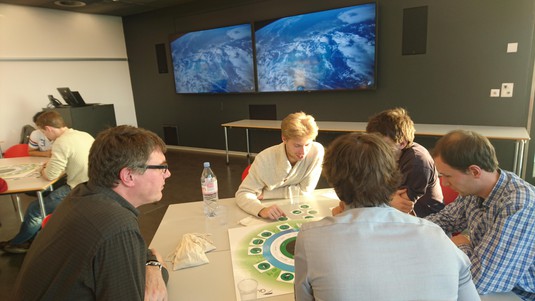Learning about sustainability in space

© 2016 EPFL
The European Space Agency and EPFL startup Quantis teamed up with the Space Engineering Center to teach students about the environmental impacts of a space mission.
What is the effect of a space mission on our Earth environmnent? To answer this question, the European Space Agency completed, with the help of EPFL startup Quantis, a complete Life Cycle Assessment (LCA) of a space Earth observation mission launched by a Vega rocket. In order to effectively share the results with the community, Quantis and ESA decided to create a game which would allow students and engineers to compare their perception of the effects with the actual results. In the game, participants must, for each phase of the mission (design, production, propellant preparation, launch campain, operations), assess the CO2 footprint, the rare material depletion and the human toxicity effects.
40 students and partners parcitipated in the game, which challenged many misconceptions. Many were surprised that indeed the launch event itself did not have a significant footprint, at least for the metrics considered. Where does most of the impact occur? In the production phase where many European actors contribute to custom fabrication and testing of high-tech components, and in the operations phase which can last for 10 years and consume a lot of energy.
Yet in total, a full mission has a similar footpring, in terms of CO2, than about 60 trans-atlantic flights. Not insignificant, but certainly not a major contributor to global warning. So why bother with the analysis? Because we believe that the space industry, which has often been at the forefront of engineering technology and represents so well the human capacity to achieve great things, must show the example and be responsible in its use of resources.
Follow the links on the right for more information and to learn when the next game session will be setup here at EPFL.





